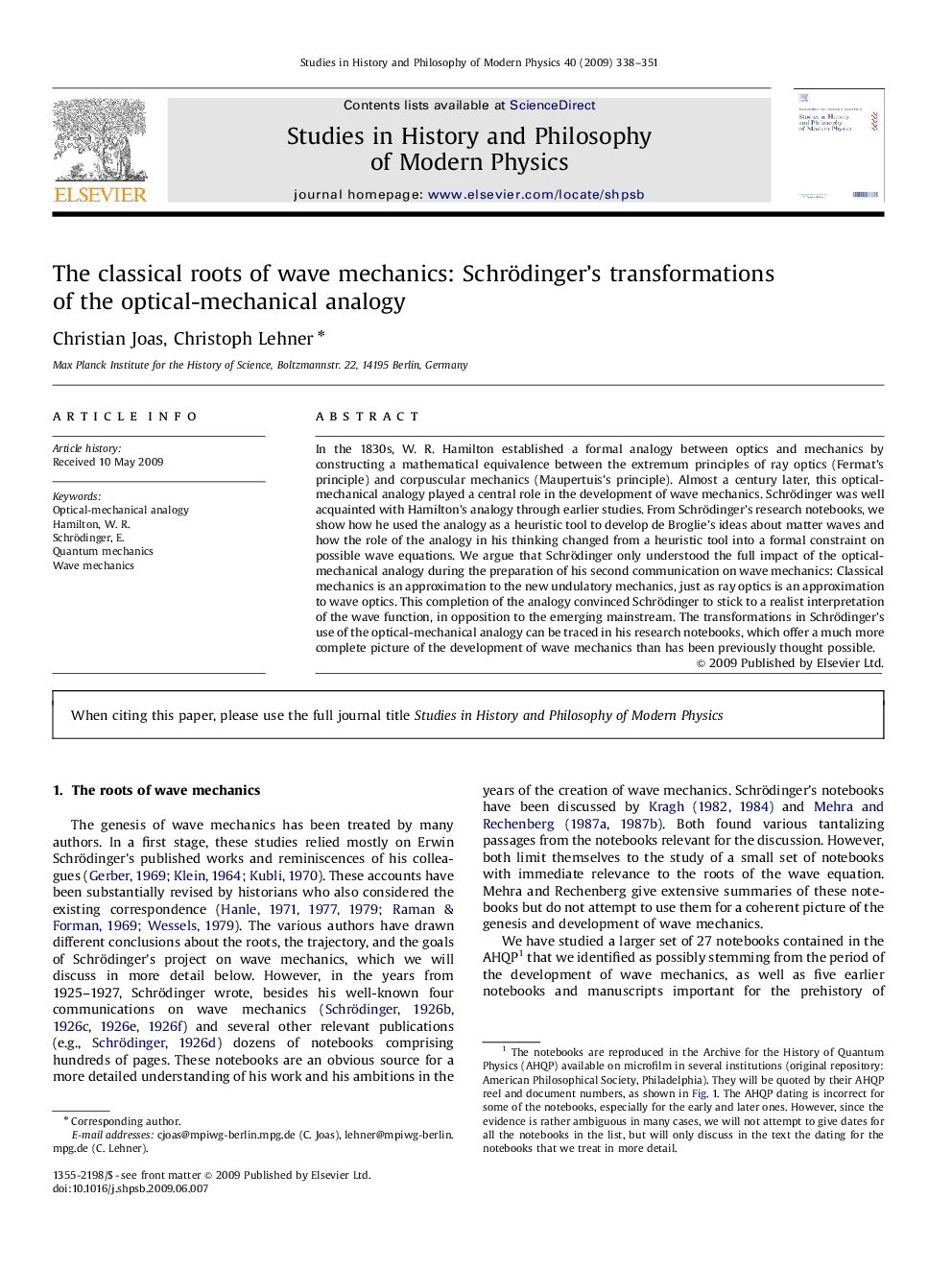| کد مقاله | کد نشریه | سال انتشار | مقاله انگلیسی | نسخه تمام متن |
|---|---|---|---|---|
| 1161709 | 1490451 | 2009 | 14 صفحه PDF | دانلود رایگان |

In the 1830s, W. R. Hamilton established a formal analogy between optics and mechanics by constructing a mathematical equivalence between the extremum principles of ray optics (Fermat's principle) and corpuscular mechanics (Maupertuis's principle). Almost a century later, this optical-mechanical analogy played a central role in the development of wave mechanics. Schrödinger was well acquainted with Hamilton's analogy through earlier studies. From Schrödinger's research notebooks, we show how he used the analogy as a heuristic tool to develop de Broglie's ideas about matter waves and how the role of the analogy in his thinking changed from a heuristic tool into a formal constraint on possible wave equations. We argue that Schrödinger only understood the full impact of the optical-mechanical analogy during the preparation of his second communication on wave mechanics: Classical mechanics is an approximation to the new undulatory mechanics, just as ray optics is an approximation to wave optics. This completion of the analogy convinced Schrödinger to stick to a realist interpretation of the wave function, in opposition to the emerging mainstream. The transformations in Schrödinger's use of the optical-mechanical analogy can be traced in his research notebooks, which offer a much more complete picture of the development of wave mechanics than has been previously thought possible.
Journal: Studies in History and Philosophy of Science Part B: Studies in History and Philosophy of Modern Physics - Volume 40, Issue 4, December 2009, Pages 338–351